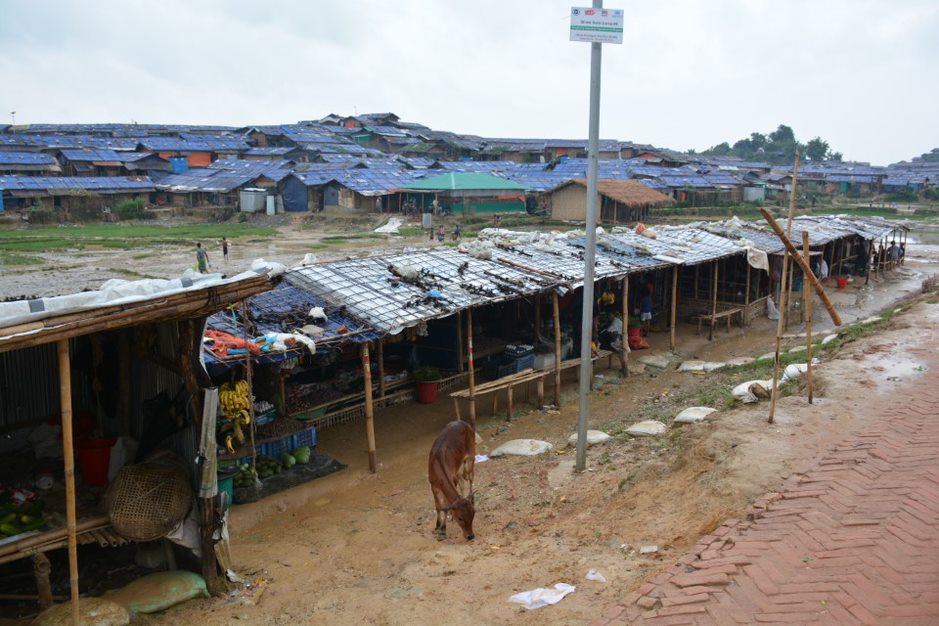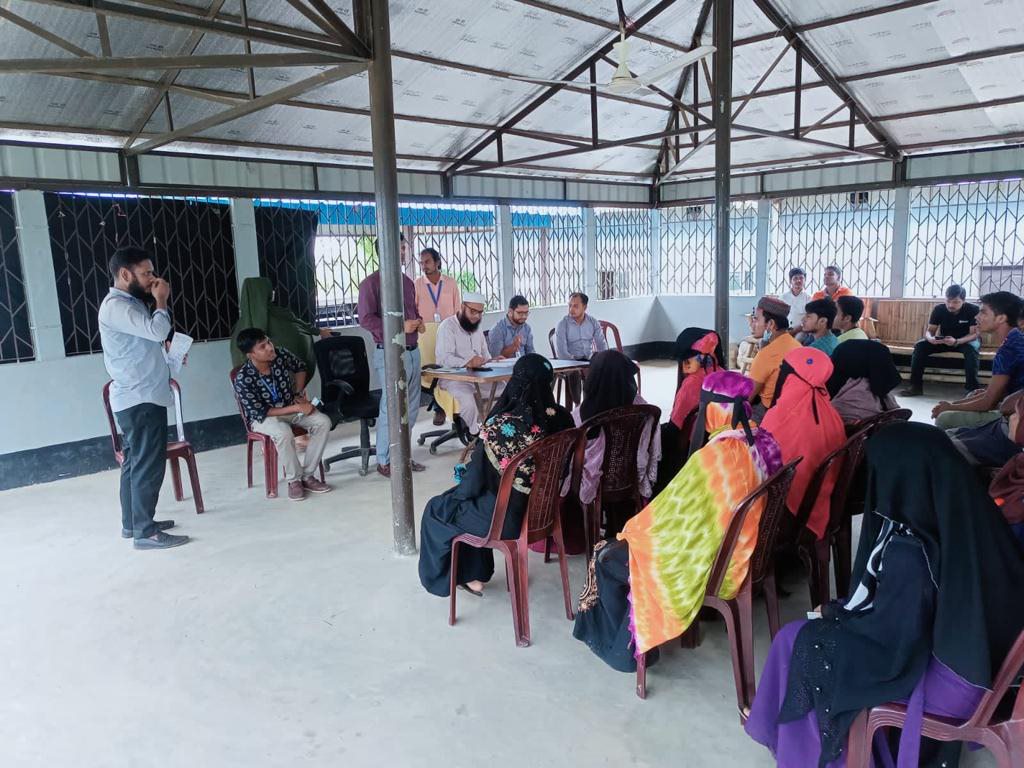
Today is the 22nd annual World Refugee Day, which commemorates both the anniversary of the 1951 United Nations (UN) Refugee Convention and our international commitment to protect refugees.
In recognition of this year’s theme—“finding hope away from home”—we highlight the situation facing Rohingya Muslims in Cox’s Bazar, Bangladesh, currently home to the largest refugee camp in the world. Displaced populations experience significant health, economic, and environmental challenges while building new homes and communities. The Population Council is dedicated to meeting the needs of all people who have been forcibly displaced, and remains engaged in Cox’s Bazar through on-going research and programming.
Decades of Persecution and a Camp the Size of a City
Cox’s Bazar serves as a crossing point for Rohingya Muslims fleeing over 50 years of nationalist violence and ethnic cleansing. Myanmar is predominantly Buddhist and under its 1982 Citizenship Law, Rohingyas lost citizenship, were stripped of human rights protections, and became stateless. As of March 2023, over 960,000 Rohingya refugees had been jointly documented in Bangladesh.
The Bangladeshi government has responded by constructing a network of 33 highly congested camps across Cox’s Bazar. Kutupalong is the largest, hosting over half a million people. With repatriation to Myanmar an unlikely near-term outcome, Cox’s Bazar will remain home to this population for the foreseeable future.
Challenges in Refugee Settlements
Environmental Risks
Due to camps’ insecure structures and hillside placements, refugee populations are exposed to considerable environmental risks. These include flooding, fires, and landslides, which are of additional concern during the monsoon season. Between January 2021 and December 2022, the camp experienced a total of 222 fires. In March of this year, another large-scale fire left at least 12,000 refugees without shelter and just two months later, Cyclone Mocha destroyed hundreds of other shelters. These climate shocks further increase vulnerability of displaced populations and exacerbate already difficult living conditions.
Health Concerns
Refugees face specific health-related challenges surrounding nutrition, mental health, infectious disease, and sexual and reproductive health (SRH). Among adolescent refugees, higher rates of depression and anxiety are common, and densely populated camps are acutely susceptible to infectious diseases (e.g., COVID-19). Cox’s Bazar was the 7th hardest-hit district by the pandemic, which disrupted international aid, damaged the local economy, and resulted in serious detriment to health outcomes and livelihoods. Additionally, more than half of Rohingya refugees in Bangladesh are women, and as of 2018, approximately 50,000 women were pregnant. These demographics experience poor SRH outcomes, such as low receipt of antenatal care and high prevalence of gender-based violence and sexual exploitation.
Economic Stress and Crime
Refugees in Bangladesh are unable to leave camps or build permanent structures. Few opportunities for work exist and recent ration cuts have increased economic distress, which may contribute to high observed crime rates. Displaced populations remain especially vulnerable to robbery, homicide, sexual violence, and human trafficking.
Pathways to Improve Refugee Health and Livelihoods
In light of these challenges, the Council conducted a 2020–21 livelihood needs assessment study to investigate the livelihood and employment opportunities available to young Rohingya refugees. By administering a household survey to 1,200 refugees and facilitating focus group discussions, the research aimed to understand the types of skills needed to generate livelihoods, both during their interim stay in Bangladesh and upon repatriation. We identified the following areas that require additional attention and investment.
Social Services
Food security was Rohingyas’ primary reason for staying in the camps, followed by access to healthcare. To strengthen food access in the camps, the World Food Program (WFP) and its partners launched a 2019 e-voucher food program, replacing the in-kind food distribution system. The e-voucher allows Rohingyas to purchase a variety of food items from WFP-designated outlets across camps. However, approximately 80% of respondents expressed dissatisfaction, describing the e-voucher’s monthly allotment of BDT 910 (i.e., 9 USD) per-person as inadequate. Similarly, over half of respondents mentioned spending up to BDT 1,000 (i.e., 10 USD) for health-related expenses in the last 30 days.
Education and Livelihood Training
There is no provision for Rohingyas to receive formal education in Bangladesh. The Bangladeshi government, in collaboration with development partners, instead offers informal educational opportunities through refugee camp learning centers. However, learning center attendance is very low, particularly among girls. Rohingya youth have low levels of education overall, with only 55% having attended school in Myanmar prior to coming to Bangladesh. Among Rohingya youth who received an education, 59% did not progress beyond the primary level. Further, only 28% of girls and young women had completed primary education, in comparison to 46% of young men.
Access to skills training opportunities for Rohingya youth in Bangladesh is also extremely limited. One-third were aware of available opportunities and only 7% received training. This is especially problematic for girls and young women, for whom non-governmental organization (NGO)-based programs were nearly their sole source of skills training.
Employment Opportunities
Refugees often attempt to meet basic needs by selling relief goods, operating small businesses, tutoring, or engaging in NGO work. Paid work opportunities within camps are mostly available to men. In our assessment, two-thirds of male refugees reported some level of economic activity, in contrast with only 7% of women. Regardless of gender, the Bangladeshi government prohibits refugees from participating in the labor force outside of camps. Other contributors to the work shortage that we identified include low skill and education levels, an inability to build trade marketplaces, and lack of access to banking services.
Next Steps
Greater attention to the above domains is necessary to enable Rohingya communities to build safer and more fulfilling lives. The Population Council recommends the following actions to improve health, foster skill acquisition, support financial growth, and ensure resilience to environmental shocks among the refugee population in Cox’s Bazar:
Strengthening Social Welfare Programs
It is critical to implement sustainable, affordable, and satisfactory support services that meet refugees’ foundational needs for healthcare, education, and food security.
Implementing Livelihood Training
Diversified skills training programs that provide more pathways to income generation are essential. To address this need, the Council is currently implementing a two-year life skills and financial literacy training initiative for Rohingya youth in Cox’s Bazar to improve personal, social, and financial management skills. After a successful pilot phase in 2022, we rolled out the intervention to a large number of both male and female Rohingya and host community youth. This stage will evaluate the training’s impact, as well as identify opportunities and challenges to integrate life skills and financial literacy training into other programs in Cox’s Bazar. The findings will inform in-country policymakers and program managers to help promote large-scale implementation.

Young Rohingya Muslims attend a camp orientation session for the Council's life skills and financial literacy training program.
Expanding Work Opportunities
Efforts should be made to enhance work opportunities available to refugees through UN- and NGO-facilitated programs.
Advocating for Policy Reforms
Programmatic evidence should be leveraged to advance policy reforms that address refugees’ health and well-being.
